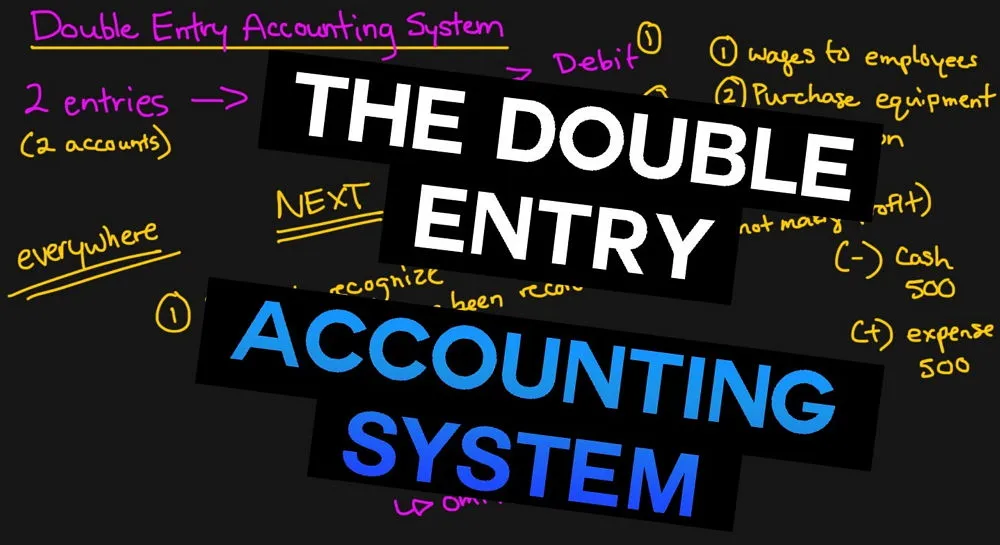The double entry system signifies a way of recording all accounting transactions twice in the books of account. It means that a transaction will appear twice in the accounting books.
This is achieved through the double entry principle.
The double entry principle states that ‘for every debit entry for a transaction, there must be a corresponding credit entry for the same transaction, and for every credit entry for a transaction, there must be a corresponding debit entry for the same transaction’.
The implication of the double entry is that for any transaction, at least two parties will be involved. That is, the giver and the receiver.
The double entry system therefore concludes that a receiver should be debited ‘for receiving’ while the giver should be credited ‘for giving’. The debiting and crediting to ensure that double entry system is followed are done in the ledger.
Ledger
Ledger is the principal book of accounts where the double entry principle is completed. The ledger contains various accounts which are part of the double entry. Each account in the ledger is divided into two parts namely debit side and credit side. The debit side is always on the left while the credit side is on the right.
Classification of Ledger
In some big organizations where transactions are numerous, the ledgers may be divided into suitable classes. However, the ledgers can be classified into two, namely, personal ledger and impersonal ledger.
Read Also: An Essential Guide to Chemical Waste Disposal
- Personal ledger
Personal ledgers are ledgers that contain accounts in the names of persons, organisations and firms. It can be divided further into:
1a. Sales ledger
This contains the accounts of those customers who buy goods on credit and owe the company. It is also called debtors ledger.
1b. Purchases ledger
Purchases ledger contains supplier’s accounts. Suppliers are those that the company bought goods or received service from on credit and have not paid for them. It can also be called creditors ledger.
1c. Private ledger
This ledger contains the accounts of the business owner e.g. capital, drawings, bank and loan account. These accounts are kept confidential due to its sensitive nature. - Impersonal ledger
They are ledgers containing non personal accounts. They contain accounts other than those in the names of person, organisations and firms. Impersonal ledger can be further classified into two:
2a. Real ledger
It contains the accounts of properties and other possessions of the company which can be seen and touched. e.g. Motor vehicle, furniture, fittings, land, building, office equipment, plant and machineries.
2b. General or nominal ledger
This contain other accounts that cannot be found in other ledgers especially those accounts used in recording income, expenditure, gain and losses of a business. e.g. Purchases account, transport and travelling expenses account.
Account According to Garbutt (1984), an account is a ledger record, in a summarized form, of all the transactions that have taken place with the particular person or value specified. Soyode (1980) defines an account as the systematic mechanism for the tabulation of monetary increases and decreases in individual assets and equities.
An account can therefore be defined as part of the ledger that records transactions from the books of original entries in the order in which they occurred and form part of the double entry system. - Personal account
These are accounts of person and organizations that the company transacts business with. e.g. Debtors account, creditors account. - Impersonal account
It consists of accounts of non-person(s) and it is sub divided into two. - Nominal account
It records the accounts of income and expenditure of the business. e.g. Sales account, purchases account, wages account. - Real account
They are accounts that record the company’s properties and possession that is expected to last for more than one accounting year. e.g. Plant account, machinery account, equipment account, motor vehicle account.
A careful examination of the account above shows that it is divided into two equal parts, and each part has same type of heading. The left side is the debit (Dr.) side, while the right side is the credit (Cr.) side. The date a transaction occurred will be written under the date column.
Particulars or details: The space is for recording the description of transaction and also, to show where the other (corresponding) entry will be recorded in another account to fulfil the double entry principle of account.
Folio: This shows the page of the source document from where the posting originate or a page in the day book or cash book etc.
Amount: The value of the transaction is recorded here and it can be in any currency. However, two different currencies cannot be merged under an account. But a currency can be converted to the other currency being used to record other transactions.
In summary, the double entry system signifies a way of recording all accounting transactions twice in the books of account. The double entry principle states that for every debit entry, there must be a corresponding credit entry, and for every credit entry, there must be a corresponding debit entry.
The double entry system is completed within an account in the ledger. The ledger contains various accounts which are part of the double entry. Each account in the ledger is divided into two parts namely debit side and credit side. The debit side is always on the left while the credit side is on the right.
This article explains the concept of double entry system, defines a ledger and discussed different classifications of ledger as personal ledger, impersonal ledger, sales ledger, purchases ledger, private ledger, real ledger and general or nominal ledger.
Preparation of personal account, impersonal account, nominal account and real account in compliance with double entry principle were also considered.
Read Also: Your Role as a Consumer, Wage Earner, Citizen, and Who Benefits from a Business?
